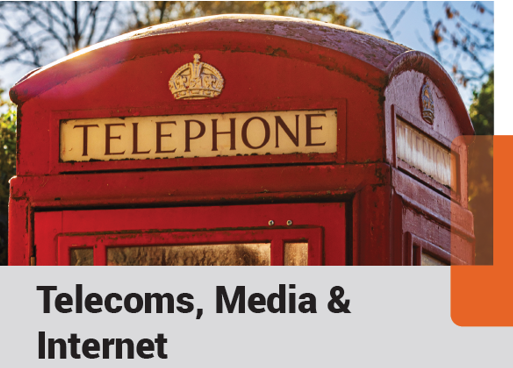Brazil loves mobile. The roll out of 4G networks and the increased adoption of smartphones are gathering pace in a country which in this Olympic year, is keen to show its maturity on the world stage. Here Fernando Paiva, Brazilian mobile industry journalist and editor of the daily news website Mobile Time discusses how mobile ‘caught fire’ in Brazil and the opportunities for the VAS sector.
For six years, Brazil lived the miracle of the multiplication of SIM cards. From 2009 to 2015, the number of mobile connections in service in the country jumped from 174 million to 281 million, surpassing the Brazilian population, of 200 million people.
This boom could be explained by the high cost of the mobile interconnection fee. To avoid the payment of this fee to competitors, mobile carriers created promotions to encourage on-net traffic.

Many saw the country as a new China of the mobile world, with the advantage of being a democracy and of having a flexible currency exchange rate. This lead up to a boom of mobile start-ups, many of them financially backed by foreign private equity funds.
As a consequence, Brazilians started to manage two, three or even four SIM cards from different operators at the same time. The trend had the support of handset vendors with the launch of dual or even triple SIMcard phones. There was also some help by local developers who created apps to identify the carrier of each mobile number before you dial it. For SIM cards vendors it was paradise.
The peak was reached in May 2015, with 284 million mobile lines in service. That strong growth, allied to the quick migration of the customer base to smartphones, grabbed the attention of foreign investors to Brazil.
Many saw the country as a new China of the mobile world, with the advantage of being a democracy and of having a flexible currency exchange rate. This lead up to a boom of mobile start-ups, many of them financially backed by foreign private equity funds. That was the case of Easy Taxi, 99Taxis, Nubank and others.
The problem is that the real mobile phone customer base of Brazil was much smaller. The last official number disclosed by the government dates back to 2014 and says there were 137 million mobile phone users in the country. In other words: nearly half of the Brazilian mobile lines in service were extra lines. The Brazilian mobile market was a bubble that would burst at any moment.
The miracle of the multiplication of the SIM cards could not last forever. First of all, it was an expensive game. For each line in service, carriers pay an annual fee to the local regulator. Secondly, the mobile interconnection fee was reducing gradually year over year. It used to cost BRL 0.31 per minute in 2012. It dropped to BRL 0.16 in 2015. And it is expected to reach BRL 0.03 in 2018. It does not make much sense setting on-net and off-net call prices apart.
 The bubble finally burst in the middle of 2015, while Brazil was entering an economic recession. Last June, for the first time the total of mobile lines in service decreased in the country. The downward trend followed up month after month up to December, when there was a record 12 million lines net cut.
The bubble finally burst in the middle of 2015, while Brazil was entering an economic recession. Last June, for the first time the total of mobile lines in service decreased in the country. The downward trend followed up month after month up to December, when there was a record 12 million lines net cut.
During the whole year of 2015, there was a reduction of 23 million mobile lines in service. On December 31st, there were 258 millions. That is the same level as of December of 2012: a three-year regression. The forecast for 2016 is of a continuous decrease, as there are still dozens of millions of extra lines inside Brazilian phones that are not much used.
The carriers are responsible for the bubble burst. If in the past they were proud of their inflated customer base figures to impress shareholders, now it is time to end this delusion and clean the mess. In a move in that direction, last November Oi and TIM, two of the four major local carriers, launched new prepaid plans with the same price per minute for on and off-net calls.
But what is the impact of all this on the mobile content market? In fact, it is positive. Campaigns focusing on user acquisition of value added services (VAS) can now be more assertive, reaching real people, not ghost lines rarely turned on. The biggest challenge is to face recession itself, as the Brazilian consumer is harassed by inflation and unemployment. I do not believe the Brazilians will quit their phones, but they will be more cautious when buying VAS.
Services related to productivity and education will gain momentum, while the ones related to entertainment may lose. Service providers will need more creativity also in defining their business models and in the elaboration of communication campaigns.
Fernando Paiva
Editor
Mobile Time


Furthermore, the fall of the average top up in Brazil, due to the economic recession, means a tough time for service providers in future revenue share negotiations with mobile carriers. On the other hand, greed and lack of flexibility on the carrier side could push current allies to the over the top (OTT) world.
Foreign investors, however, should not retract. Brazil may not be a new China of the mobile world, but is still a gigantic market.
The migration to smartphones may slow down for a moment but will not stop at all. Furthermore, with the current exchange rate of BRL 4 for each US 1 Dollar, it has never been so cheap for foreigners to invest in the country. This is the perfect time to come to Brazil. No miracles or delusions. Only the fair (and cheap!) reality that predates a new growth.





